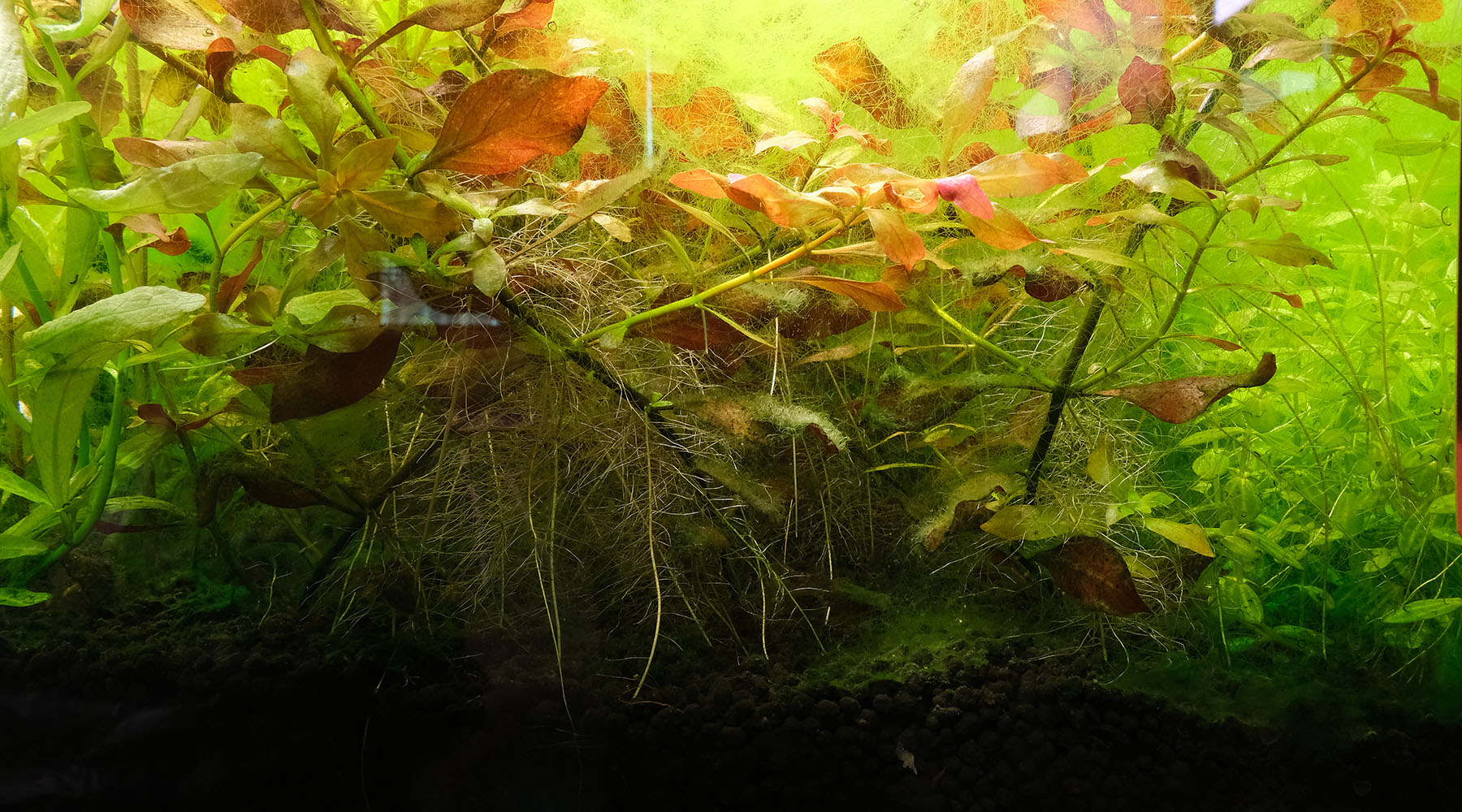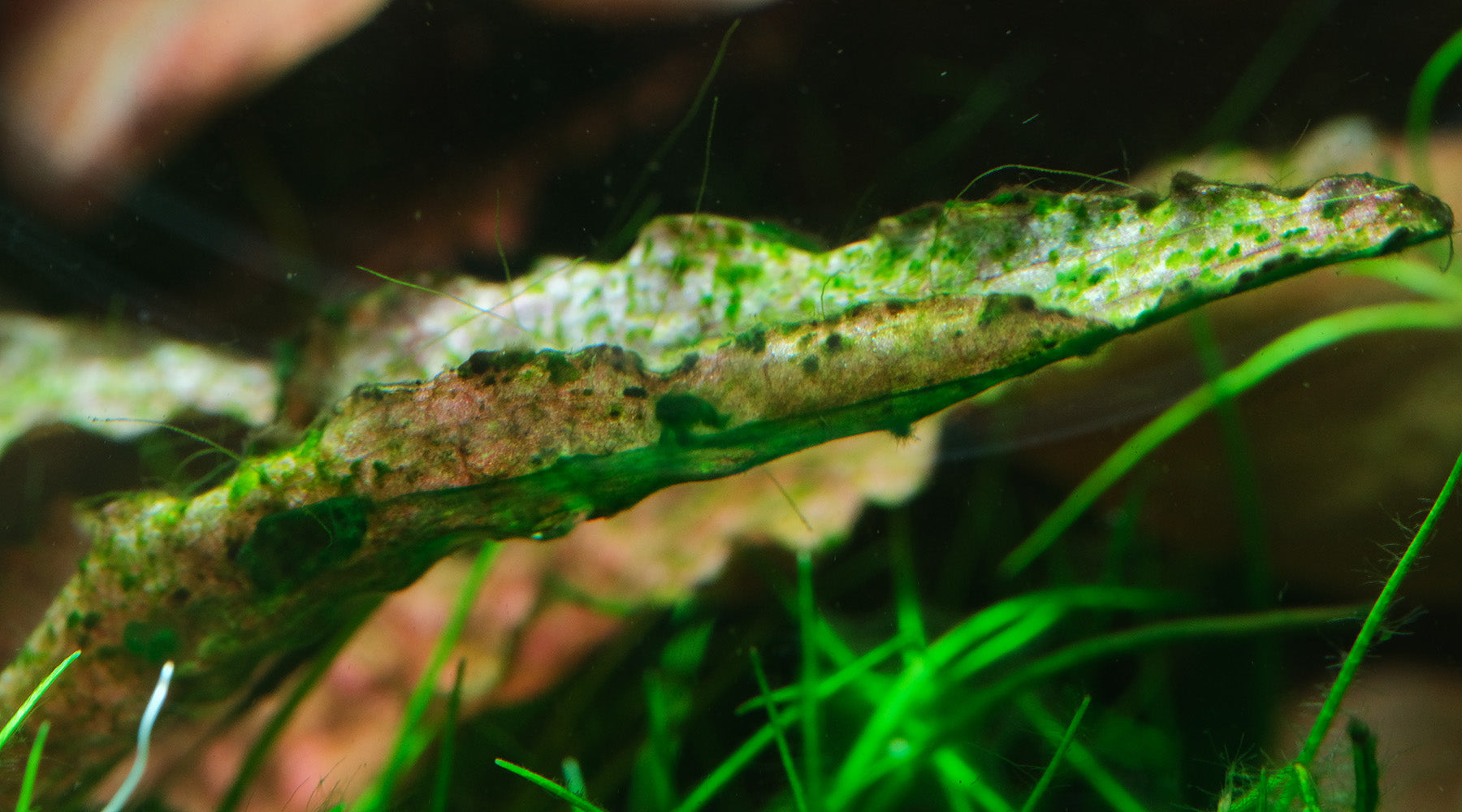Your Cart is Empty
Menu


Your Cart is Empty
February 18, 2025 3 min read
Above: a System Shock from an unexpected drop in CO2 triggered plant melt (above- bottom right) and BBA to spawn on the Alternanthera reineckii.
In the picture below, we see the leaves of Samolus parviflorus red- and other plants- suddenly carpeted by fine hair algae- the classic symptom of what we call a 'system shock'.

This occurs when changes in environmental parameters induce adaptive stress that weakens plants, making them vulnerable to algae.
While the effects of some events are expected: e.g. power outages and the addition of a large school of fish (spike in organic waste), system shocks are often caused by 3 "silent killers".

In mature tanks, the accumulation of old growth (decaying shaded stems and leaves, above) and detritus is easily ignored. Tanks look "natural" when grown, and we associate them with the beneficial leaf litter we see in terrestrial parks. In the tiny, enclosed environment of an aquarium, however, old growth and detritus often build up to a tipping point-an ammonia spike, an algae bloom. The cliff fall is deceptively sudden.
We cover a related aspect in a another article on 'Tank Peak'. When a tank is in full bloom or 'Summer' as we call it, it marks the painful but necessary milestone of trimming and often replanting. Aquatic plants are not perennial, and require regular replanting of the healthy tops.
Because plants do not move, they rely on the flow of water to bring oxygen, carbon dioxide, and nutrients to their leaves. Filters naturally clog over time, and reduced flow is both invisible and noticeable.

While an algae-infested tank looks irreparable (above- leaves of a Crypt 'flamingo' attacked by BGA, BBA and Hair Algae, it can recover if the plants are fundamentally healthy:
Remember: a well maintained tank with healthy plants can look irrecoverable, but the opposite is true.